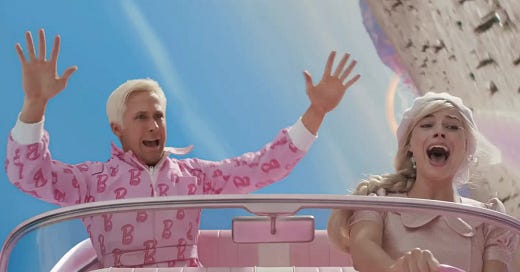I did not hate Barbie. I sat with my mother and consumed a tub of popcorn and enjoyed myself. The last reel of the film is a bit didactic and self-absorbed and not as much fun as the rest. Yes, there is feminism. Yes, there is analysis. But this film is about girls, and how they live in a world half full of boys, in which time destroys beauty and the link between generations of women is fragile. For unpacking all that in one film, a world of plastic is indeed fantastic.
Barbie reconnects Gloria, the mom in the ‘real world’ played by America Ferrera, and her daughter Sasha, played by Arianna Greenblatt. During the third act, when the film indulges its magical realism the most, Barbie reconnects to her fairy godmother, Rhea Perlman, playing the part of Barbie creator Ruth Handler. She also reconnects all the Barbies to themselves, smashing the patriarchy in the process.
Ken, though? Poor Ken. He must learn to live on his own instead of living for Barbie. She does not want him. Spoiler: …
Keep reading with a 7-day free trial
Subscribe to The Distance to keep reading this post and get 7 days of free access to the full post archives.





